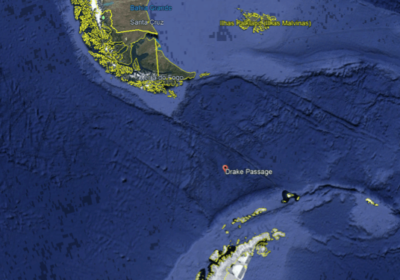By M. Romao and L.B.M. Pires
Atlanta, March 14, 2018
In recent years we have seen a substantial increase in people traveling to Antarctica, about 50,000 (International Association Antarctica Tour Operators – IAATO) tourists, embark during the summer months on sailboats and ships departing from the ports of Ushuaia (Argentina) and Punta Arenas (Chile) towards the Antarctic peninsula, carrying mainly Americans, Australians, Germans and UK citizens.
The exotic trip has one more ingredient that is the emotion and the courage to cross the Drake Passage, one of the most stormy regions in the world, due to frequent cyclones, including bomb cyclones, that form at the confluence of the Antarctic, Pacific and Atlantic oceans. Many sailors are proud to say they crossed the Drake 3, 4, 5, …. times. Really it is something to boast about, facing waves of 10 meters high, winds of 50 kt is not for everyone. In the Drake Passage there are no islands or lands for shelter, so a trip of this kind has to be very well planned, with vessels suitable for bad weather and trained crew. It is very important to monitor the weather conditions in the region to determine the best time to cross. In addition to taking into account traditional and well-known forecasts of weather and waves, one should know that there is a practical and easy way to evaluate the sea conditions in the Drake Passage that was developed by the Chilean Navy. The best situation for crossing the Drake is when the differences in atmospheric pressure observed in the Ushuaia and Carlini meteorological stations are the lowest possible, because the greater the pressure difference, the more stormy the Drake will be.
For example:
1. Pressure in Ushuaia at 12Z: 995 hPa
Pressure in Carlini at 12Z: 990 hPa
Difference: 5 hPa = GOOD for crossing
2. Pressure in Ushuaia at 12Z: 1000 hPa
Pressure in Carlini at 12Z: 980 hPa
Difference: 20 hPa = BAD for crossing
3. Pressure in Ushuaia at 12Z: 1000 hPa
Pressure in Carlini at 12Z: 992 hPa
Difference: 8 hPa = REGULAR for crossing
In general, traversing should be avoided when the pressure difference is equal to or greater than 12 hPa.
After several days of bad weather on the Drake, the sea can remain agitated, even if the pressure gradient is small. You should wait at least 12 hours for the start of the crossing.
See here some videos of ships crossing the Drake during the passage of a bomb cyclone:

